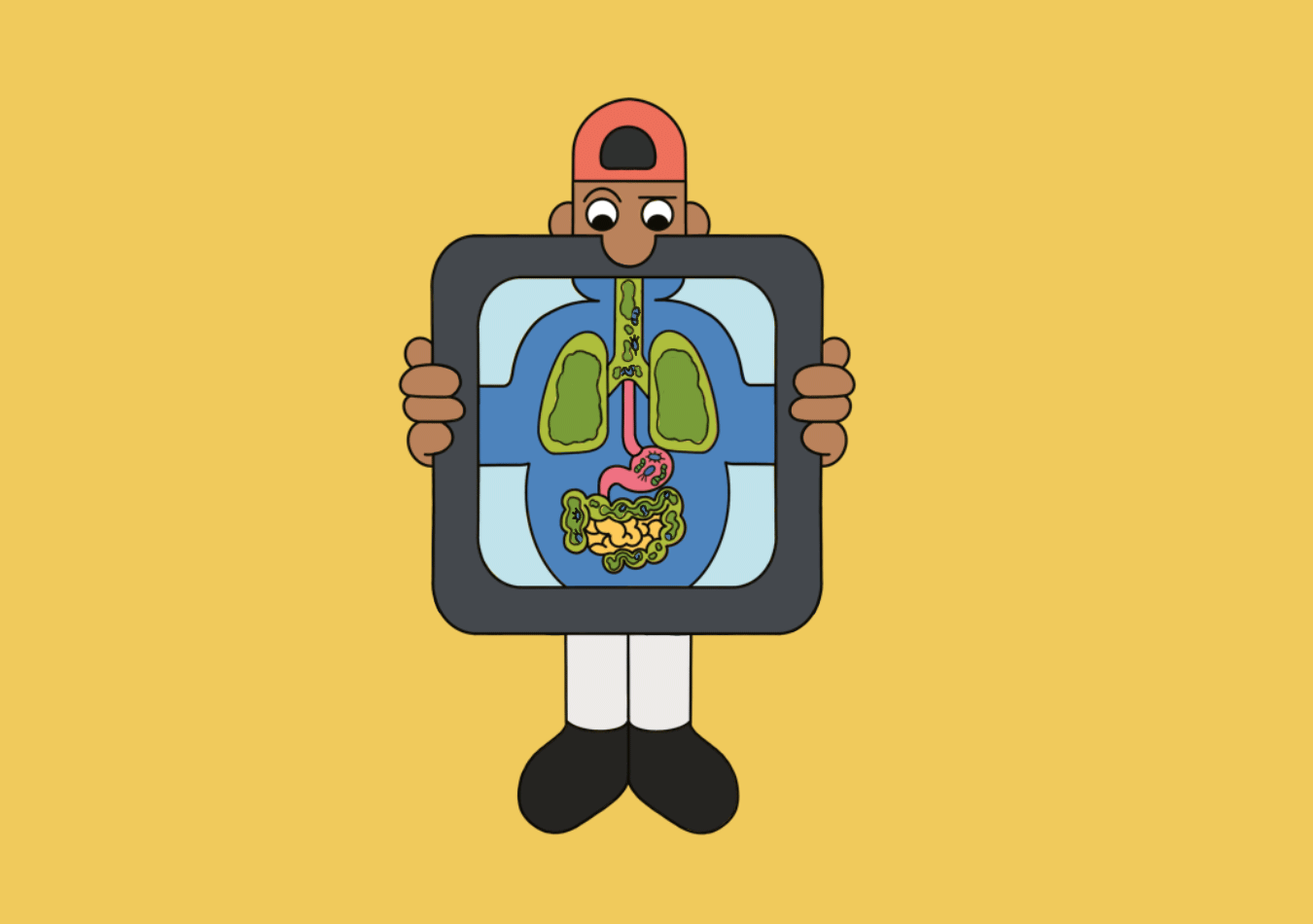
Most of us would rather not dwell for too long on the subject of mucus. We know it is there, quietly lubricating our insides and presumably doing vital work. It is only when we have a cold that we give it any particular attention – and even then, it is an unpleasant nuisance, something to be wiped away as discretely as possible and chucked in the bin.
Yet new research is revealing just how marvellous mucus is. Of course, we have long known that it plays a key role in fending off disease, but it was mostly thought of as nothing more than a sticky physical barrier. We now know it is far more sophisticated: it is a substance that can morph, adapt and even change the behaviour of invading microbes. “We are actually now learning more and more that it is very dynamic,” says biochemist David Thornton at the University of Manchester, UK. “It is not just an inert barrier.”
These discoveries are prompting a dramatic rethink of the slimy stuff. Mucus is increasingly inspiring new medicines, such as experimental drugs that may one day replace antibiotics, while understanding where mucus goes wrong is leading to new treatments for conditions such as inflammatory bowel disease. As researchers continue to unravel its secrets, we may find that mucus holds the keys to improving our health and fighting off disease.
Meet your mucus
You might not know it, but you are oozing with mucus. It covers 200 times more surface area than skin, coating every one of our moist surfaces, inside and out, from our eyeballs and sinuses to our lungs and stomach. It even lines the inner ear. But despite being smothered in the stuff, we knew relatively little about mucus until the past two decades – and a lot of what we thought we knew turned out to be wrong.
But let’s start at the beginning. Mucus is believed to have first evolved hundreds of millions of years ago in marine invertebrates, such as corals and jellyfish, as a protective barrier and digestion aid. It is now found across the entire animal kingdom and performs an array of functions, including lubricating surfaces, guarding cells from damage, clearing away debris and regulating immune responses. Yet for much of history, this gooey wonder – especially when there was too much of it – was seen more as a sign of illness rather than a fighter of it.
We now know that mucus is actually here to help, and it is uniquely suited to each surface it coats. While the stuff in our stomachs is thick and acidic, the goop in our nose, mouth and lungs is runnier and on the neutral side, making it easier to clear from airways. While its exact formulation varies throughout the body, it always contains a few key ingredients: about 90 to 95 per cent of it is water, large proteins known as mucins comprise up to 5 per cent, and the rest is a mix of electrolytes, fats and other proteins.
It is the mucins that are the real secret to the sauce. These molecules resemble fuzzy caterpillars, with hundreds of stringy sugars called glycans sprouting from their long protein backbones. The sugary offshoots attract and retain water, giving mucus its slippery, gel-like consistency. Once secreted, mucins cross-link with themselves and other compounds, creating a mesh-like configuration. The more mucins in mucus, the denser this network becomes, resulting in smaller gaps – or pores – in its structure.
It is becoming really obvious how important mucus is to our health
Until about 15 years ago, it was widely assumed that pore size alone determined whether something could pass through mucus’s sticky defences – larger entities, like bacteria, may be thwarted, while smaller substances, such as nutrients, could slip by.
But then a series of findings began poking holes in the premise. In 2010, Katharina Ribbeck at the Massachusetts Institute of Technology and her colleagues measured how quickly microplastic beads with varying electrostatic charges moved through pig mucus. They found that beads with a slight negative charge passed through up to 10 times faster than those with strongly positive or negative charges. Mucus’s acidity also influenced its permeability: plastic particles with a slight negative charge diffused twice as fast when mucus was neutral than when it was acidic. These findings helped lay the groundwork establishing that mucus is much more than a simple sieve.

Around the time of ovulation the cervical mucus, pictured here, becomes clear, slippery and stretchy, making it easier for sperm to swim through
DR ISABELLE CARTIER/SCIENCE PHOTO LIBRARY
“Mucus provides really two categories of protection,” says Ribbeck: a physical barrier shielding the body from unwanted objects and molecules, and a chemical barrier, actively interacting with foreign materials. In that way, mucus is almost like a bouncer at an exclusive nightclub, deciding who gets through. Mucus also changes according to our needs: for example, human cervical mucus becomes thinner and more watery during ovulation, enabling sperm to penetrate it more easily. It might even respond to our body’s internal clocks, according to unpublished research from Thornton and his colleagues. They found that the composition and thickness of mucus in the guts of mice shifts between day and night. “This really is a kind of very well-engineered environment,” says Thornton.
Super slime
Once it was clear that mucus could interact with foreign entities, Ribbeck began wondering what the implications of this were for the trillions of microbes we encounter. “Many of these critters are benign, but of course, there are also problematic pathogens in this mix,” she says. “Over millions of years, mucus has, it seems, evolved to keep those pathogens in check. And the question was, how does it do so?”
The first clue came in 2012. Ribbeck and her colleagues were working with the bacterium Pseudomonas aeruginosa, which can cause difficult-to-treat infections throughout the body. Like many bacteria, the microbe only becomes dangerous when it clusters together into gooey, toxic matrices called biofilms. At the time, the prevailing belief was that although mucus kept these nasty bacteria from reaching underlying tissue, its sticky nature actually enabled the microbes to clump together more easily.
Yet when the researchers exposed the bacteria to a solution containing pig mucins, they found the opposite. “They didn’t aggregate at all,” says Ribbeck. “In fact, if anything, they stayed separate and were less able to cause harm.” After 6 hours, only about 15 per cent of the bacteria in the mixture had begun forming biofilms, compared with more than 40 per cent of those in the mucus-free control.
Further experiments in 2019 revealed that mucins achieved this feat by reducing the activity of genes that allow P. aeruginosa to communicate, produce harmful substances and form biofilms. It was the mucins’ sugar molecules – the glycans – that triggered these effects, albeit in a surprising way. The glycans don’t kill the bacteria – instead, they are a food source. “It is like giving a kid a lollipop. They will calm down. Usually, they stop fighting,” says Ribbeck. Treating the microbes to a glycan seems to tame them, rendering them less harmful, she says.
Ribbeck and her colleagues have since identified numerous glycans capable of managing problematic pathogens. For example, in 2022, they found glycans that can suppress a fungus responsible for yeast infections called Candida albicans and others that keep cholera-causing microbes at bay; in 2024, they found others than can protect against strep throat. “[Mucins] present dozens of different sugar molecules, and these sugar molecules all have different functions,” says Ribbeck. “It is basically like a broad-spectrum microbial management library that is in action in our body.”
From mucus to medicine
All this raises the thrilling possibility of taking inspiration from mucus to create new medicines. One strategy could be to use glycans themselves, or molecules mimicking them, as alternatives to antibiotics or immunotherapies. Ribbeck says that, in unpublished work, she and her team have already formulated one glycan-inspired molecule that can reduce the toxicity of C. albicans. The next step is making it into a medicine.
They are also hunting for glycans that could combat pathogens involved in traveller’s diarrhoea, dental cavities and lung infections. There might even be molecules that could boost the immune system or curb infections caused by microbes that are hard or impossible to manage with antibiotics. “I really think we can learn to manage not just unwanted, problematic pathogens, but also the immune system if it goes awry,” says Ribbeck. She is now in the process of launching a company to bring these therapies to market.

A mural by British artist Banksy entitled Aachoo!! – sneezing can clear the airways of mucus, expelling pathogens and irritants with it
GEOFF CADDICK/AFP via Getty Images
Other experimental treatments inspired by mucus are further along the pipeline. For instance, Guangshuai Zhang at Shenyang Pharmaceutical University in China and his colleagues have developed an oral drug that may help strengthen the intestinal mucus barrier in people with inflammatory bowel disease. Though it hasn’t been tested in humans, the treatment formed an artificial mucus layer in the intestines of mice with symptoms of the condition, shielding inflamed tissue from harmful bacteria and dampening inflammation.
But given how important mucins in particular seem to be in protecting against disease, researchers are now racing to identify their full range and catalogue exactly what they do, assembling a “mucinome” analogous to the genome.
Humans have at least 21 types of mucin, each with a unique structure and function giving it distinctive properties. Mucin MUC5B, for instance, interacts with hair-like structures in airways to propel mucus, along with the particles it traps, up and out of our lungs, while MUC2 is the major mucin in the gut, playing a key role in protecting the cells lining its surface – the epithelial barrier – from bacteria.
The mucinome is far richer than this though. It also includes what are called “mucin domains”, which have the same fuzzy caterpillar appearance as mucins but are smaller, repeating pieces of a larger, non-mucin protein. Carolyn Bertozzi at Stanford University in California and her team are uncovering these structures in proteins throughout the body – in a 2022 study, they found that about 2 per cent of all proteins in the human body contain mucin domains, many of which we didn’t know existed before. We are only just now learning what their functions are.
“Our interest in the mucinome is how it changes in disease settings and whether there are ways to intervene,” says Bertozzi, explaining that deficient mucins or shifts in mucin levels could play a role in a wide variety of conditions. In chronic obstructive pulmonary disease, for example, increased levels of another mucin, MUC5AC, in airways leads to an overproduction of mucus that clogs lungs and seals in pathogens. Mucolytics, drugs that break the bonds linking mucins together to thin it out, are used as a treatment. Other studies have shown that people with ulcerative colitis are deficient in MUC2; their mucus is thinner and less sticky, allowing pathogens to break through.
Changes in the mucinome might also be affecting conditions that seem unrelated to mucus. Recently, Bertozzi and her colleagues found that declines in mucin abundance may contribute to age-related cognitive decline.
In the brain, a layer of specialised cells that lines blood vessels – known as the blood-brain barrier – strictly regulates which substances in the bloodstream can cross over into brain tissue. “In young mice, those cells have a nice, thick, juicy mucin coating that we think is part of maintaining the blood-brain barrier,” says Bertozzi. “But in old mice, which notoriously have a leaky blood-brain barrier, we discovered that blood vessels have a very thinned out mucin layer.”
Using gene therapy, the team increased mucin production in these blood vessels, which in turn, improved cognitive performance in older mice. Bertozzi and her colleagues have since patented the therapy. While it hasn’t been tested in people, the researchers are hopeful it could slow or even reverse age-related cognitive decline.
How to keep your (gut) mucus healthy
So, knowing that mucus is deeply important to overall health, what can you do to keep your mucus in good shape? A healthy diet seems to support our mucus barriers, in the gut at least.
For example, a 2017 study found that when mice were deprived of dietary fibre, their gut bacteria resorted to consuming mucins as a nutrient source, eroding their mucus barrier. In 2018, Rebecca Carrier and her colleagues at Northeastern University in Boston showed that common food additives, known as emulsifiers, can alter the composition and integrity of mucus. One emulsifier, carboxymethylcellulose, decreased pore size and slowed the movement of bacteria through intestinal mucus from rats. Carrier’s research also found that larger particles struggled to get through intestinal mucus when it was exposed to a solution of partially digested fats. This suggests that fats can strengthen our intestinal mucus, potentially by joining different mucin molecules together, says Carrier.
Taken together, she says, “what this means is that essentially our mucus barrier is probably changing depending on what we are eating”.
Carrier reckons it is too soon to make any firm mucus-boosting dietary recommendations. But, says Bertozzi, “one way you can protect your gut mucinome is to make sure you eat enough plant-based material and give your microbiome what it really wants”. In other words, keeping your fibre intake up can help maintain your gut, and staying well-hydrated can keep mucus flowing effectively through your airways. That is perhaps the best we can do for now.
Mucus may not be the most glamorous subject of study. But the more we learn about this slimy unsung hero the more it seems it is worthy of our attention. “We are in a time where it is becoming really obvious how important mucus is to our health,” says Ribbeck. “And I get a kick out of something as common as mucus having its moment to shine.”
Topics:









